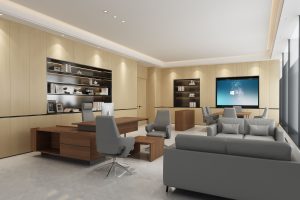The furniture market in the Middle East is experiencing steady and unique growth as the region’s economy expands and consumer preferences diversify. With its robust economic development, the Middle East is rapidly becoming a focal point for the global furniture industry. According to Statista, Saudi Arabia’s furniture market is expected to reach USD 8.34 billion by 2025, growing steadily at a CAGR of 1.12% until 2029. Living room furniture, the largest segment of the market, is projected to contribute USD 2.73 billion to the market share in 2025. Notably, the demand for traditional-style furniture that reflects Saudi Arabia’s rich culture has surged, indicating a deep emotional connection to local culture and identity.
Similarly, the furniture market in the United Arab Emirates (UAE) is showing remarkable growth, with revenue projected to reach USD 3.89 billion by 2025. Despite a slightly lower CAGR of 0.89%, the UAE boasts one of the highest per capita furniture expenditures in the region, at USD 401.90. This trend reflects a strong demand for luxury and customized furniture in the UAE, positioning the country as a major player in the global furniture market.
Living Room Furniture: A Fusion of Cultural Style and Premium Living
In Saudi Arabia, living room furniture plays a crucial role in both family gatherings and showcasing personal taste and cultural heritage. By 2025, the revenue from this segment is expected to surpass USD 2.73 billion, growing steadily at 0.90% CAGR. Traditional Arabic-style furniture is highly favored for its intricate designs and cultural significance, demonstrating Saudi consumers’ deep affection for their native culture and their pursuit of high-quality living standards.
The UAE’s living room furniture market is equally notable, with revenue projected to reach USD 1.02 billion in 2025. Per capita revenue is forecasted to be USD 105.70. Here, premium design is synonymous with living room furniture, with consumers paying greater attention to brand, material, and design details. Furniture in the UAE is not just functional but serves as a symbol of status and identity, pushing the market’s continual growth.
Bedroom Furniture: A Growing Demand for Quality and Design
In Saudi Arabia, the bedroom furniture market is experiencing strong growth, driven by increased disposable income and the desire for personalized, high-quality bedroom setups. The market revenue for bedroom furniture is expected to reach SAR 1.4 billion by 2025, with a 2.24% CAGR. Consumers in Saudi Arabia are focusing on the perfect blend of materials, craftsmanship, and design to create a cozy and comfortable personal space.
Similarly, in the UAE, the bedroom furniture market is expected to reach USD 686.5 million by 2025. Driven by consumers’ desire for comfort and style, the demand for luxurious and stylish bedroom furniture is growing rapidly. Consumers are increasingly inclined to purchase items that not only offer comfort but also make a statement about their taste and status.
Kitchen and Dining Furniture: A Strong Market Trend
In Saudi Arabia, the kitchen and dining furniture market is projected to reach USD 580 million by 2025, driven by increasing demand for stylish, high-quality furniture. The demand for dining tables, kitchen islands, and cabinetry is growing rapidly, reflecting the country’s growing interest in elaborate interior designs. The increasing number of affluent consumers in Saudi Arabia is spurring the demand for luxurious kitchen furniture that enhances the overall aesthetic of the home.
Similarly, the UAE’s kitchen and dining furniture market is set to reach USD 498.8 million by 2025, with a 0.88% CAGR from 2025 to 2029. Like Saudi Arabia, UAE consumers are becoming increasingly drawn to high-end, stylish furniture to decorate their homes. Despite the high market share held by dining tables, kitchen islands, and cabinetry, the UAE market continues to exhibit steady growth in this segment.
Summary: A Thriving Market for Quality Furniture in the Middle East
The increasing demand for high-quality furniture driven by a rising desire for a premium lifestyle is a key factor propelling the growth of the Middle Eastern furniture market. As furniture serves as both a functional necessity and a cultural statement, it has become an essential part of consumer preferences in the region. The robust performance of the Saudi and UAE markets, driven by consumer demand for both traditional and modern designs, will continue to inject significant momentum into the region’s overall market growth.
Key Insights:
- Market Growth: Both Saudi Arabia and the UAE show significant growth in the furniture market, driven by consumer interest in luxury, customization, and high-quality designs.
- Cultural Preferences: There is a marked demand for furniture that reflects traditional cultural styles, especially in Saudi Arabia, while the UAE market leans toward luxury and modernity.
- Rising Disposable Income: Increased disposable income in both countries is leading to greater spending on premium furniture, particularly in living rooms, bedrooms, and kitchens.
- Trend Toward Customization: There is a growing trend toward personalized, high-end furniture that caters to consumers’ tastes and cultural identities.
Conclusion
The Middle Eastern furniture market, especially in Saudi Arabia and the UAE, is expanding rapidly as consumers continue to seek out high-quality and culturally meaningful products. This trend, combined with a growing demand for luxury and customized pieces, offers significant opportunities for manufacturers and designers. As the region continues to prosper, its role as a critical market for global furniture production will only increase, making it an essential area for investment and innovation.






